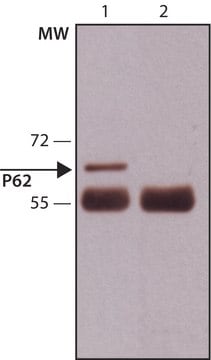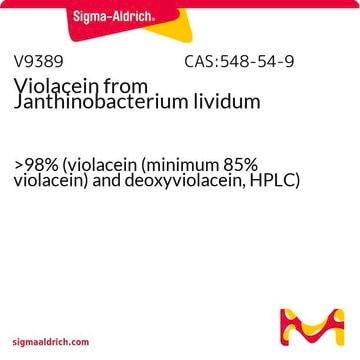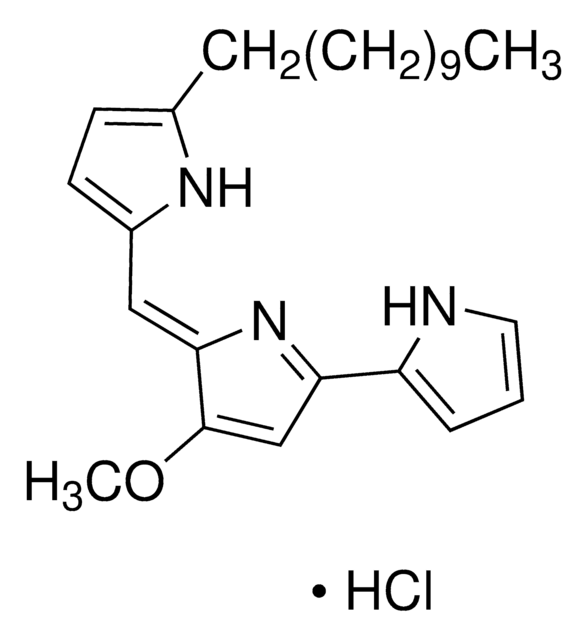P0103
Prodigiosin hydrochloride
from Serratia marcescens, ≥98% (HPLC), powder
Synonyme(s) :
2,2′-Bi-1H-Pyrrole,4-methoxy-5-[(5-methyl-4-pentyl-2H-pyrrol-2-ylidene)methyl, 2-Methyl-3-amyl-6-methoxyprodigiosene
About This Item
Produits recommandés
Source biologique
Serratia marcescens
Niveau de qualité
Pureté
≥98% (HPLC)
Forme
powder
Solubilité
DMSO: soluble
H2O: insoluble
acetonitrile: soluble
chloroform: soluble
methanol: soluble
Conditions d'expédition
wet ice
Température de stockage
−20°C
Description générale
Actions biochimiques/physiologiques
Code de la classe de stockage
11 - Combustible Solids
Classe de danger pour l'eau (WGK)
WGK 3
Point d'éclair (°F)
Not applicable
Point d'éclair (°C)
Not applicable
Équipement de protection individuelle
Eyeshields, Gloves, type N95 (US)
Certificats d'analyse (COA)
Recherchez un Certificats d'analyse (COA) en saisissant le numéro de lot du produit. Les numéros de lot figurent sur l'étiquette du produit après les mots "Lot" ou "Batch".
Déjà en possession de ce produit ?
Retrouvez la documentation relative aux produits que vous avez récemment achetés dans la Bibliothèque de documents.
Notre équipe de scientifiques dispose d'une expérience dans tous les secteurs de la recherche, notamment en sciences de la vie, science des matériaux, synthèse chimique, chromatographie, analyse et dans de nombreux autres domaines..
Contacter notre Service technique








